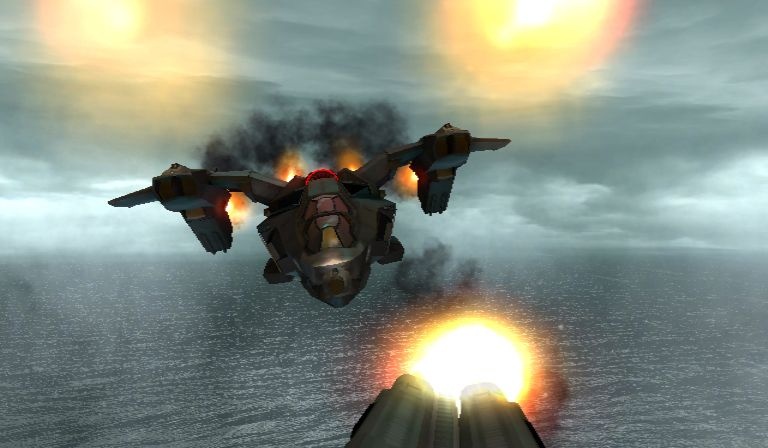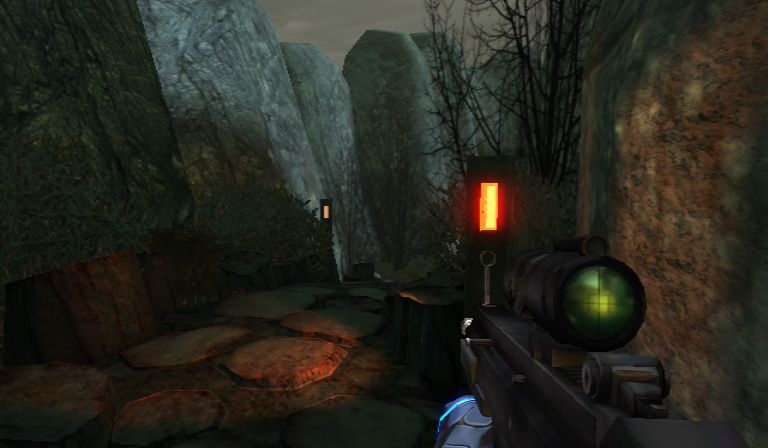Conduit 2 Impressions
We meet with High Voltage Software at E3 2010 to see its attractive first-person shooter in action.
High Voltage Software's Bill Sullivan clearly takes player feedback to heart. The developer's 2009 shooter The Conduit was praised for its excellent controls and online experience but was panned for its linear level design, predictable pace, and bland art design. In a demo of Conduit 2 we saw at E3 2010, Sullivan mentioned how the original Conduit's gameplay and engine were designed simultaneously. Resources were spread out during the development of the original, but that is not the case with the sequel. Now, with the engine complete, High Voltage can devote its resources fully to game design. Sullivan impressed that they wanted to keep what was right and improve the weaknesses of the original in the sequel. Based on what we saw in a behind-closed-doors demo of Conduit 2, it looks like the developer is doing exactly that. Spoiler warning: The article that follows contains important plot elements of the Wii first-person shooter The Conduit.
Conduit 2 is a sci-fi first-person shooter, and it begins where The Conduit left off. At the conclusion of the first game, protagonist Michael Ford chased John Adams through a portal; Conduit 2 begins on the other side of that conduit, which emerges on an oil derrick off the coast of Florida, near the Bermuda Triangle. After bonking a few enemies on the head with a wrench (the way that one guard flopped into the water after getting clocked elicited more than a few pleased guffaws in the room), Ford grabbed a pistol and filled a few nearby enemies with lead. According to Sullivan, artificial intelligence is a focus in Conduit 2. AI characters now feel different from each other; they will possess different weapons from each other, and how they behave will depend on which weapon they wield. For example, a foe with a shotgun is going to charge you in order to shoot you in the face from close range.
The oil derrick level was a good-looking exterior level littered with explosive barrels, which made it easy to take down the enemies protecting the derrick. Soon, however, Ford needed to escape a room about to burst into flames. As Ford, Sullivan shot the window and escaped into an adjoining corridor. He explained that breakable objects and cover would be an important part of the game. To demonstrate this shift in priorities, he turned a nearby table over and took cover behind it, just as an enemy did on the other side of the room. This is one of many ways High Voltage is changing the way levels flow, making them less predictable and straightforward. And though some areas will be necessarily linear, other environments will offer more tactical freedom and give players a chance to explore. High Voltage's goal is to learn from its mistakes with The Conduit and offer a lot of variety from level to level.
Another way the game will provide variety is with branching levels. Sullivan stated that many levels will offer multiple paths for the player to take, and each path will offer different gameplay experiences. The content depends on player choice. As the demo continued, Sullivan continued to shoot his way through various corridors and along the deck, where the ocean lapped against the sides and the falling rain cast a pall over the action. Then began the demo's set-piece battle: a boss fight against a leviathan creature that emerged from the water to attack the derrick. Sullivan stated that they wanted to give players a more traditional boss battle experience in Conduit 2 than they did in the original. Expect to see bosses with weak points to shoot at, and set-piece battles against giant foes.
Defeating the monster involved manning multiple antiaircraft guns and taking aim at the leviathan's glowing weak spots, and then later, using harpoons to finish the job. It was a larger-than-life boss battle that offered a great sense of chaos. Sullivan (as hero Ford) moved about with ease, avoiding the attacks from the leviathan, which set the floor aflame with glowing hot spots he needed to steer clear of. Conduit 2 will support Wii MotionPlus, and while it apparently will offer an incremental improvement over the standard Wii controls, players not using Wii MotionPlus shouldn't be concerned: this is one sequel that will provide controls as equally smooth as those of the original. One aspect of the original that Sullivan did think they could improve upon, however, was the story. We didn't hear much about Conduit 2's story, but we do know that Ford is out for revenge: his entire mission in the original was a sham, a lie perpetrated by Adams.
The only gameplay we saw was of the single-player campaign. However, Conduit 2 will also feature a full suite of competitive multiplayer options. The game will not feature weapon sets like those of the original. Instead, players will create custom loadouts by purchasing weapons from an in-game store using points they earn while playing. In addition, you will be able to upgrade those weapons, allowing you to essentially create your own class. There will also be a co-op mode known as Invasion, which Sullivan says is a team survival mode similar to Gears of War's Horde mode and Halo ODST's Firefight. Multiplayer maps will take place in multiple locations, including Siberia and Atlantis, and players will also return to Washington, DC, where the city has taken a dramatic turn for the worse.
From what we can tell, Conduit 2 is a great-looking shooter, and High Voltage has clearly taken to heart the feedback it has received regarding the original Conduit. We're eager to get our hands on the final product, though we do have a short wait ahead of us, since Conduit 2 is scheduled to be released in the fall of 2010. Until that time, GameSpot will bring you news on this intriguing shooter as it develops.
Got a news tip or want to contact us directly? Email news@gamespot.com


Join the conversation